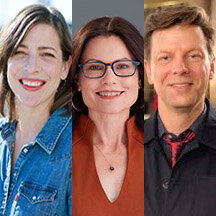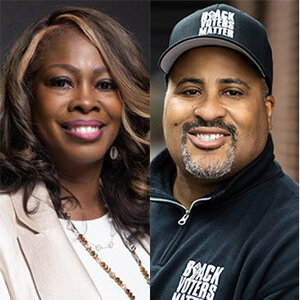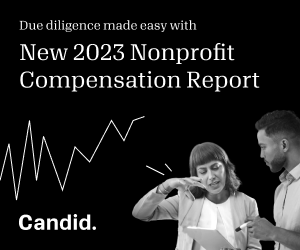Seeking philanthropic impact? Let’s turn the lens onto ourselves.

The philanthropic sector must respond to the growing and urgent challenges of poverty, violence, and discrimination; we have the potential for transformative influence on nonprofits and the people they serve. But foundations can only make progress if we fundamentally change the way we resource nonprofits and measure impact.
Many funders assess their impact by reporting grantee outputs like numbers of program participants, workshops given, or doors knocked on. Consequently, nonprofit staff and foundation program officers alike spend their time tracking these outputs, which aren’t actually indicators of a foundation’s effectiveness or impact.
If we are looking for nonprofits to be effective, strategic, and impactful, we need to turn the impact assessment lens on ourselves and ask: Did our grants build an organization’s capacity to make informed decisions? To test new approaches? To build a stronger ecosystem? If we as grantmakers are ultimately seeking effective nonprofit partners, why not evaluate whether we’re doing our part to build them?
Investing in grantees’ what-if scenarios
Recently, in my role as program officer with The Cricket Island Foundation, I was talking to the leader of a grantee organization in New Orleans. She reflected on how she feels stuck in a cycle with funders only interested in making short-term, project-specific commitments tied to contrived metrics. Instead of following her clear vision for a strong organization with long-term funding, this leader spends most of her time courting, reporting to, and seeking renewals with funders. She and her team are continually overstretched in an unsustainable way.
Another grantee based in New York City needed to review and realign its work for greater impact. To make these changes and test new approaches, the organization had to pause some of its programming and engage in an intensive strategy process—but its leader worried about undertaking any strategic changes for fear of losing funding and being forced to lay off staff. With long-term flexible commitments from The Cricket Island Foundation and a few other funders, the organization made the necessary changes, deepening their effectiveness and efficiency. They lost several program-focused funders along the way, but they learned that organizational strengthening takes a long time. Organizations need the space to refine and adjust strategy, and flexible funding partners invested in growth and learning are critical.
I have been part of so many of these “what-if” conversations with grantees. If funders made sustained and flexible investments in nonprofits, they could build the infrastructure, staff, and space to innovate. If funders measured their success by how well they support nonprofit effectiveness, rather than nonprofit outputs, grantmaking would be flexible, long-term—10 years at a minimum—and grantmakers would be accountable to their nonprofit partners.
Shifting from outputs to accountability
The Cricket Island Foundation’s approach to measuring impact has evolved over time. When we started making grants more than 20 years ago, we used to gather information on programmatic activities and tried to guide grantees in shaping their goals. After a few attempts at creating grantee impact assessment tools, we realized our time was better spent organizing the resources grantees needed to achieve the goals they set for themselves. This includes not only grant dollars but also connecting people, mobilizing our peers, and taking an ecosystem approach to our impact.
We learned that an effective organization is one that has the breathing room—created by adequate and flexible funding—to assess its work, make changes, and experiment. This focus has shifted how I use my own time. I have moved away from trying to hold grantees accountable for their own work toward requiring that I be accountable for supporting nonprofit partners in deepening their impact.
As a faculty member of Philanthropy New York’s training series, I have seen many different ways that new program officers are thinking about their role, from monitoring and compliance to organizing their peers to catalyze impact. The former puts the accountability on the nonprofit partner, whose outputs become the program officer’s measure of success. By contrast, the approach that focuses on being a funder organizer and field catalyst requires seeing nonprofit partners as experts in their work and requires program officers to be accountable for finding ways to accelerate nonprofit impact.
Experimenting with impact-focused grantmaking
The good news is that there are grantmakers experimenting with this type of approach on a large scale and documenting positive results. The Ford Foundation’s BUILD program is one of the most significant experiments in building organizational sustainability, with 300 grantees internationally and a $2 billion commitment. The BUILD evaluation supports the idea that strengthening institutions and networks leads to improved programming and impact. The assessment of BUILD also found that organizational development and the ability to have mission impact are closely connected and support one another.
Philanthropist Mackenzie Scott’s “no strings attached” grantmaking gives us a glimpse into what would happen if foundations let go of their programmatic priorities and gave significant unrestricted grants. When given the choice, more than 90 percent of the recipients of Scott’s grant invested in financial sustainability, and almost 90 percent invested in their staff and operational needs.
What’s more, this type of foundation impact can be measured. Foundations can ask nonprofits about the impact of flexible spending and long-term commitments on their organizations, their teams, their ability to secure new funding, and their ability to intentionally and strategically shift their work and manage their finances.
Accountability remains the main concern when foundations consider changing their impact assessment approach. How will we know that we’re working towards our mission? How do we share this type of impact with our donors or trustees? What I’ve observed is that nonprofits with strong core capacities and infrastructure are able to learn and adapt, a process that ultimately leads them to greater effectiveness, which is, of course, our shared goal.
Moving away from counting grantee outputs engenders trust, more honest conversations, and real learning. Let’s do the type of grantmaking that will allow nonprofits to really do their work and bring us all closer to realizing our missions.
Leela van Balkom is a program officer at The Cricket Island Foundation.







How nonprofit leaders can confront declining trust in our sector